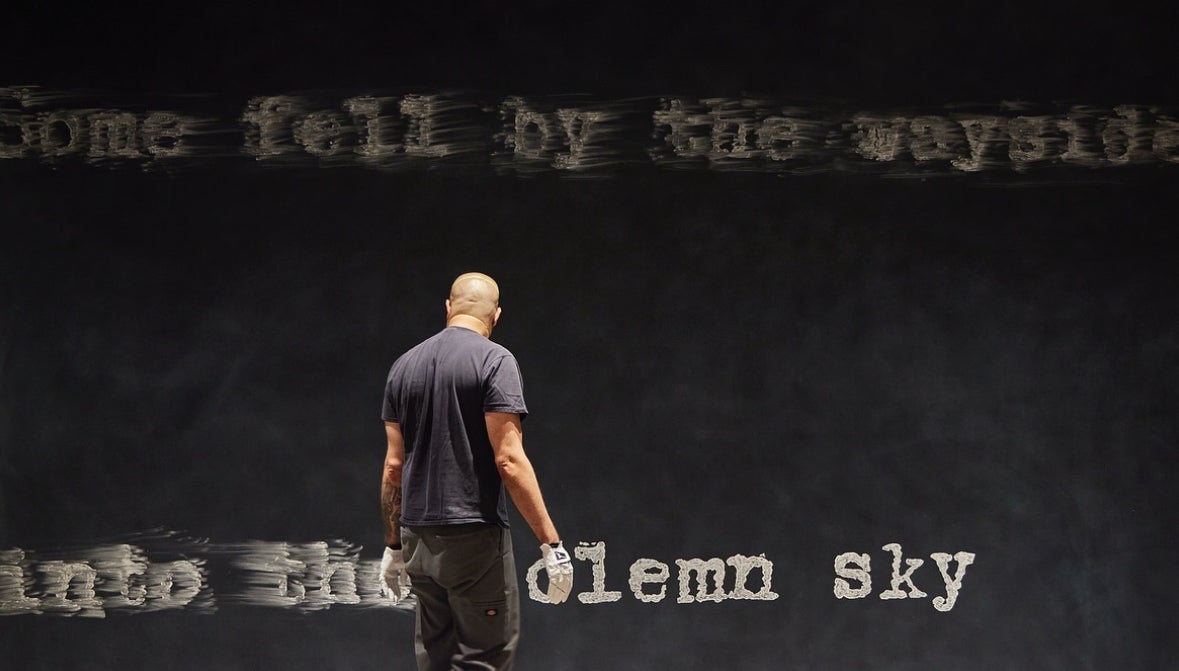The evolution of Afrobeats has been chronicled in countless ways—through viral music videos, sold-out tours, award wins, and headline-making collaborations. But one of its most intimate and enduring archives might be in still images. That’s where photographer Oliver Akinfeleye, professionally known as Drummer, comes in.
With Eagle Eye, Drummer turns years of behind-the-scenes access into a visual love letter to the genre that helped raise him. Centered entirely on Wizkid, one of Afrobeats’ key figures, the book blends both iconic images fans may recognize and never-before-seen moments captured on tour. It’s not just about what happened onstage, but everything that made those moments possible. Drummer first photographed Wizkid at Echostage in Washington, D.C., in 2017 after being introduced by DJ Tunez, the singer’s official DJ. That moment sparked an ongoing creative relationship that has taken him across continents and into rooms only a few others had access to.
The photo book, released June 27 and distributed by Blurb, is filled with moments that go beyond the spotlight, reflecting rhythm, stillness and spirit of Afrobeats. “I was living it from the inside out. Not just physically, but emotionally and culturally. I wasn’t just there to shoot shows, I was witnessing a shift in real time,” Drummer tells ESSENCE. “African music was going global, but I was also capturing what most people didn’t see; the silence, the buildup, the joy in between the chaos.”
Afrobeats, the sound at the center of this story, draws from a rich musical legacy rooted in West Africa. Decades before the genre’s current global dominance, Nigerian pioneer Fela Kuti popularized Afrobeat, an earlier form that blended highlife, jazz and funk into politically charged rhythms. By the early 2000s, that foundation evolved. Afrobeats — with an “s” — emerged as a distinct, genre-blurring movement shaped by Nigerian youth, diaspora influence and the digital age. A new sound was forming, and artists like Wizkid, Davido and Burna Boy became the soundtrack of a cultural shift.
Born in Queens and raised in a Nigerian household, Drummer says his early exposure to artists like King Sunny Adé and Ebenezer Obey helped shape his visual language long before he ever picked up a camera. “I learned early that rhythm wasn’t just sound, it was movement, color, emotion,” he says. “So when I photograph African music, I’m not just documenting moments, I’m interpreting a language I already speak.”
While Eagle Eye focuses solely on Wizkid, Drummer has also been on the road with genre-shaping artists like Davido, Burna Boy, Rema, and Uncle Waffles — experiences that helped shape his broader perspective on the genre’s global rise. One photo featured in the book, shot in 2021 at London’s O2 Arena, shows Wizkid and Chris Brown mid-embrace. “The surprise, the reaction, the crossover,” Drummer recalls. “It was one of those moments where the joy wasn’t just onstage. It was in the air.”
But this isn’t just a highlight reel; Drummer was intentional about what made it in, and what didn’t. “Some moments hit different not because they were the biggest, but because they held emotion, tension or stillness that told a bigger story,” he says. “This book had to be cohesive, intentional and rooted in the legacy being shaped in real time.”
That legacy is shaped through trust, especially when photographing artists like Wizkid, who are both global icons and notoriously private. “My presence had to be earned,” Drummer explains. “Wiz is someone who values energy and intention, so I had to make sure mine aligned… Some of the most powerful images came from quiet moments, not loud ones.”
The visual tone of Afrobeats has also shifted as the sound’s popularity has grown. “Afrobeats visuals used to feel more local,” he says. “But now they’re cinematic, global and intentional.” Still, Drummer sees his role as one of preservation as much as elevation. “Photographers deserve to be credited not just as shooters, but as storytellers. We shape memory, we archive culture.”
For Drummer, that responsibility is personal. He describes shooting “from inside the moment,” staying present without losing sight of the story’s bigger picture. “It’s memory work,” he says. “Some moments don’t reveal their value until long after they’ve passed.”
Looking ahead, he hopes Eagle Eye will serve as a cultural marker — a document of where Afrobeats has been and a guide for where it could go. “I want people to open it and feel something. Not just nostalgia, but recognition,” he says. “I want it to remind people that this was a real moment in time and that someone was there, paying attention.”
To order Eagle Eye, visit blurb.com.







